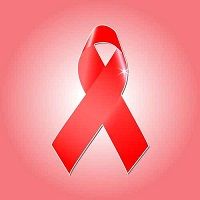Article
Researchers Map Best ART Regimens for HIV
Author(s):
Researchers offer road map for choosing antiretroviral therapies for treatment-naive HIV patients.

Picking the right drug combinations for antiretroviral therapy (ART) for patients can be a challenge.
Researchers in Canada did a systematic review and network meta-analysis to suggest what combinations worked best.
The lead author is Steve Kanters, PhD, of Precision Health Economics in Vancouver, BC, Canada, and colleagues, and the review was published online in The Lancet HIV on September 6, 2016.
“The purpose of this study was to use a network meta-analysis to assess the comparative efficacy and safety of ART regimens available at present for the treatment of HIV in ART-naive patients,” say the reviewers. They also note that a single analysis allows for an overview of an entire disease, which could inform clinical guidelines.
In 2013, the World Health Organization (WHO) updated ART guidelines, and the authors say, “the recommended first-line ART regimen consists of two nucleoside or nucleotide reverse transcriptase inhibitors (NRTI) and one non-nucleoside reverse transcriptase inhibitor.” They go on more specifically, saying, “The combination of efavirenz, tenofovir disproxil fumarate, and emtricitabine or lamivudine is the preferred option.”
The reviewers included a total of 126 studies in their analysis, and report, “Overall trials were generally good quality with low risk of bias.” After conducting multiple analyses, they say, “although efavirenz plus two NRTIs as a backbone remains a safe and efficacious regimen, other treatments are in some regards comparatively superior.”
For example, dolutegravir may be superior to efavirenz in the standard dose, and low-dose efavirenz is, in some cases, superior to standard dose efavirenz. The reviewers say, “There are several implications and considerations related to these findings.” While WHO guidelines may need to updated, the reviewers point out that “complexity of care must also be considered.”
Ease of dosing and necessary screenings before administration of drugs could make different combinations of ART more complicated. The authors say, “Despite the improved efficacy and safety, issues exist regarding the feasibility of scaling up a first-line regimen containing dolutegravir,” including logistic and clinical problems.
“In conclusion, our systematic literature review found that among ART-naive patients, the use of an INSTI plus two NRTIs, particularly dolutegravir and raltegravir, has superior efficacy and tolerance to regimens of efavirenz plus two NRTIs, and that low-dose efavirenz is non-inferior to standard-dose efavirenz,” say the reviewers.
Related Coverage:
New Line of HIV Treatment Identified for Patients Ineligible for Efavirenz Use
What’s Ahead for HIV Antiretroviral Therapy?
Study Finds Only Half of Patients on Antiretroviral Therapy Receive Recommended Regimens





